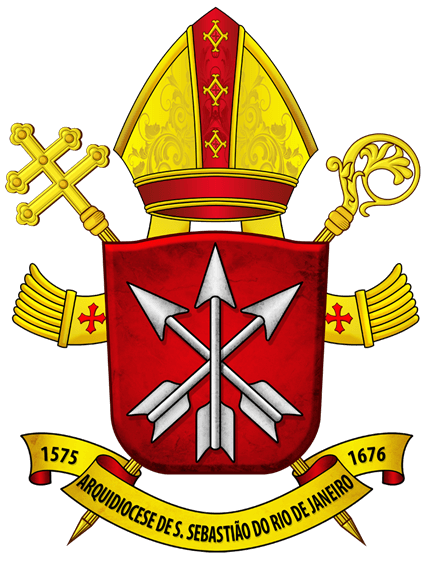The Sanctuary’s Spirituality

Christ the Redeemer is a work that expresses the feeling and the blessing of the Brazilian people, adapting itself perfectly to the landscape. The monument was conceived as an expression of the divinity of Jesus Christ and of the unsearchable riches of his Paschal Mystery. That is why it is called Christ the Redeemer of Corcovado. From this reality, the Monument has five major religious meanings.
-

1. The Eucharist

"I will be with you always, even until the end of the world" (Mt 28, 20). Christ the Redeemer of Corcovado, watching tirelessly for mankind, represents the fulfillment of this promise: thanks to the presence of the Eucharist in the chapel, it makes it real. The living Christ sacramentally, body and blood, soul and divinity, is the true heart of the Monument. The Eucharist is a heart of flesh that vivifies the statue, it is "the source and summit of all Christian life." For a practicing Catholic, Mount Corcovado itself points to the Blessed Sacrament. The chapel is the strongest religious reference of the monument, because its tabernacle keeps the presence of the living Jesus.
-

2. The Cross

If the Eucharist is the strongest religious reference of the Monument, its shape of a cross is the most visible sign to the observer from afar. The cross is a symbol of Christianity. Brazil is the 'Land of the Holy Cross'. The cross, in fact, is holy, since Jesus shed his blood on it for our redemption (Col 1, 20).
The cross of Corcovado, formed by the image of Christ himself, is turned with open arms to Guanabara Bay. As an expression of Jesus' words, 'I am the way, the truth and the life' (Jn 14,6), it instructs the navigator, pointing to the four cardinal points: the front to the East, the back to the West, the left arm to the North, the right arm to the South. More importantly, from the vertical point of view, the cross of Corcovado points to heaven: "no one can come to the Father except through me" (Jn 14, 6).
-

3. The Resurrection

Jesus Christ is not indifferent to human suffering. The encounter between Jesus and mankind happens especially through suffering. And after suffering comes the resurrection. This truth is expressed by the cross of Mount Corcovado. It is the risen Christ with open arms himself, bringing in his hands the marks of his crucifixion.
Faith in the resurrection is central to Christianity. It is the central link to the divinity of Jesus and his work of redemption: "If Christ is not risen, then our preaching is vain, and your faith is also vain" (1 Co 15, 14).
-

4. Sacred Heart of Jesus

The heart carved on the chest of Christ the Redeemer is simple, but of huge significance. The devotion to the love of God is fundamental to the Christian life. St. John the Evangelist wrote: 'God is love' (1 Jn 4, 8.16).
The loving reparation to Jesus is manifested in the consecration and veneration of the image of the Sacred Heart, on the frequent communion, especially in the first Friday of the month, and also through the 'Holy Hour' of worship. The Monument to Christ the Redeemer, at whose inauguration Brazil was consecrated to the Sacred Heart of Jesus, also helps to spread this devotion.
-

5. Our Lady of Aparecida

Our Lady of Aparecida is the patron saint of Brazil. The chapel at the feet of Christ the Redeemer is dedicated to her, adorned with a replica of her image, miraculously found in the waters of the Paraíba River, in October 1717, venerated since then with growing devotion by the Brazilian people.
Our Lady intercedes for men, on top of the Corcovado, pointing to Christ: 'Do whatever Jesus tells you to do"(Jn 2,5). The image of Mary, at the side of the tabernacle, in the Monument, is one more reason to hear the words of his Son: 'My house shall be called a house of prayer' (Mt 21,13).
Christ the Redeemer’s Supporting Companies
Apoio



Parceiros



Sponsors









